The first time I visit Low Ham church is on a blustery day in October. The wind whips through the brown green leaves of the beech trees that line the meadow and sends clouds racing across the sky. Above the rush of the wind there is the squeaking and chattering of a flock of starlings. Away to the east the Tor at Glastonbury sits atop its mump glowing pale gold in the autumn sun.
In the midst of mid Somerset in the middle of a meadow sits a church. Around it are farm buildings and machinery. It’s an odd sight. Where is the wall or churchyard that normally accompanies an English village church? Where are the gravestones and the yew trees? Where even a path that leads to the door? Here a farm track leads to its side. And there besides only grass surrounds it. It feels as if it has been put here by accident.
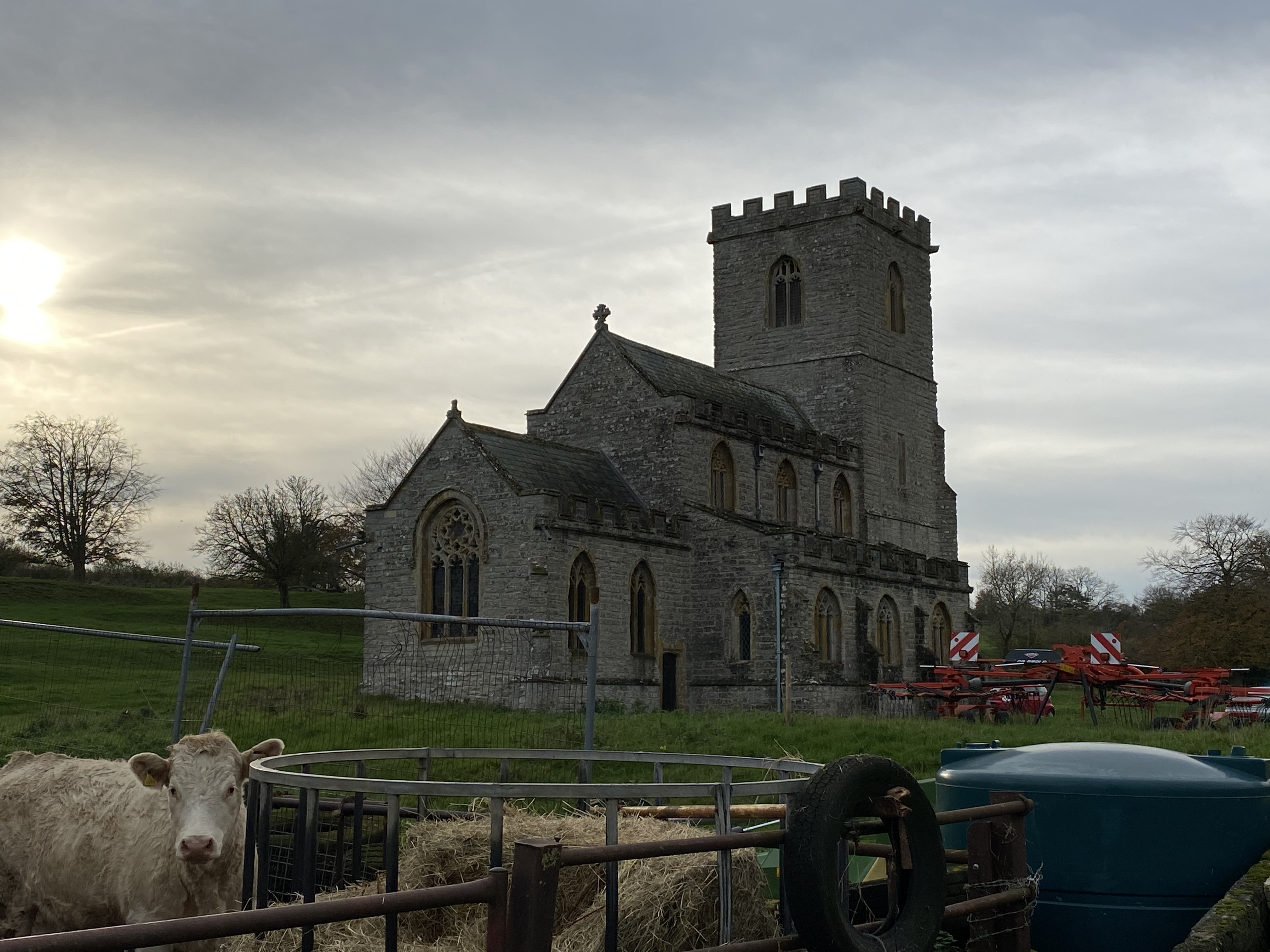
Built in 1620 by Sir Edward Hext, a successful lawyer from Devon, the church of Low Ham was a private chapel until it was given to the Church of England in 1921, which may explain its lack of a churchyard.
There are several other reasons why this church is unusual. According to the information plates provided by the Churches Conservation Trust inside the church it is of great historical and architectural significance because it was ‘built in a medieval Perpendicular Gothic style.’ The great chronicler of British architecture, Nikolaus Pevsner, referred to it as ‘one of the most instructive cases of early Gothicism in England.’ It’s also unusual because all of it was built at the same time and its original interior is mostly unchanged. It's also rare for churches to have been built in the 17th century as this was ‘a time of great violence and upheaval.’
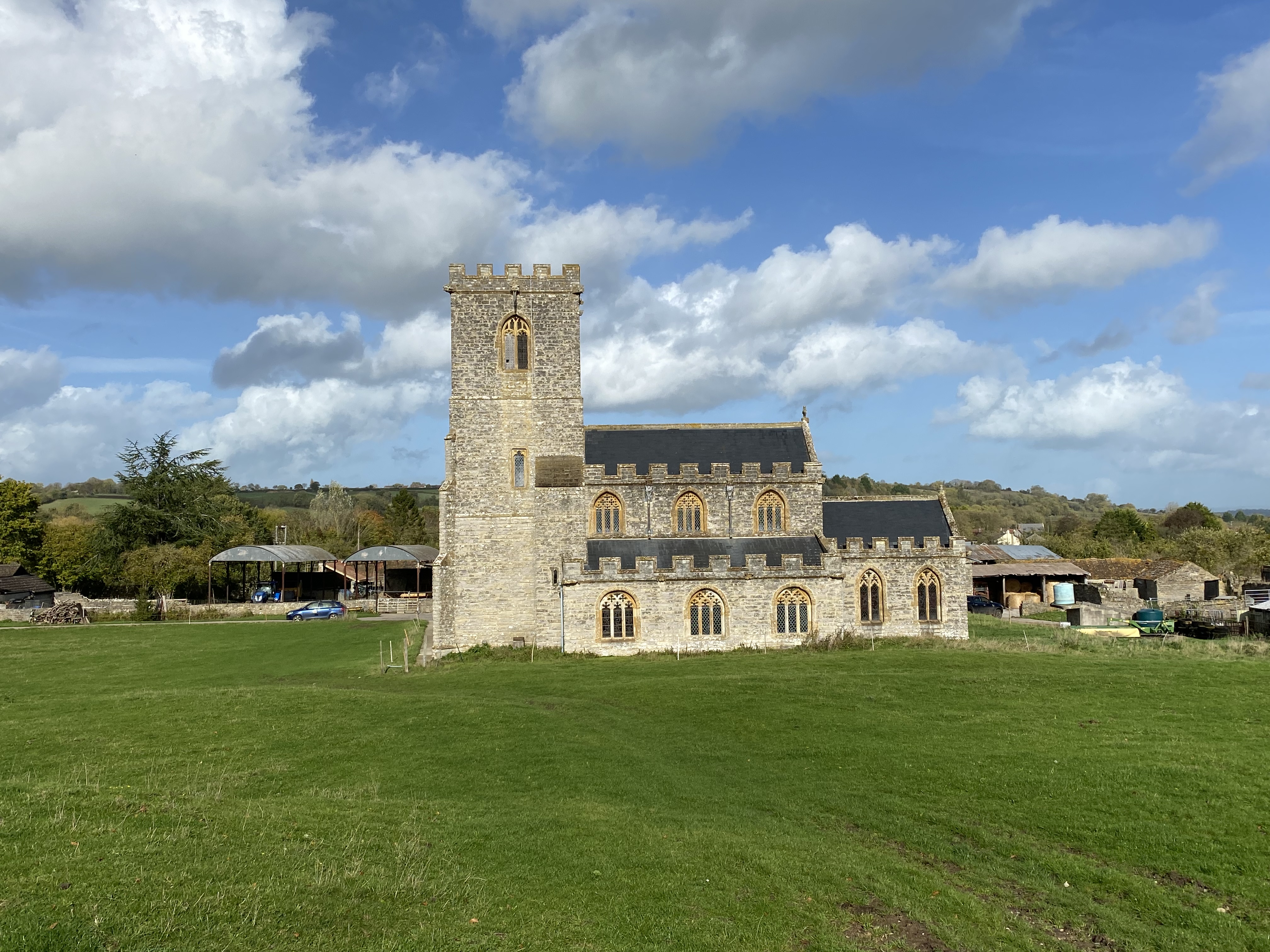
It belonged to a Royalist family, the Stawells, and survived the English Civil War. Unfortunately the manor that was here once hasn’t survived. Sir John Stawell inherited the estate through his wife Elizabeth, Sir Edward Hext’s daughter. Stawell was for many years MP for Somerset and also at one time High Sherriff.
According to the information provided he was ‘famous for his devotion to the king and was governor of Taunton during the civil war. After the civil war he was arrested and imprisoned at Newgate Prison and The Tower of London for fourteen years for refusing not to bear arms against parliament. These lands at Low Ham were confiscated and sold. Low Ham was returned to the Stawell family in 1660 when the monarchy was restored to Charles II.’
The main doors are open in the west end of the building. Normally the church is locked and the keys hang outside the front gate to the farmhouse that faces the field. Two bees drone around the nave. There is the rush of the wind outside and I can see it blowing through the grass beyond the door. There is a gentle creaking sound from inside the nave: someone else is here.
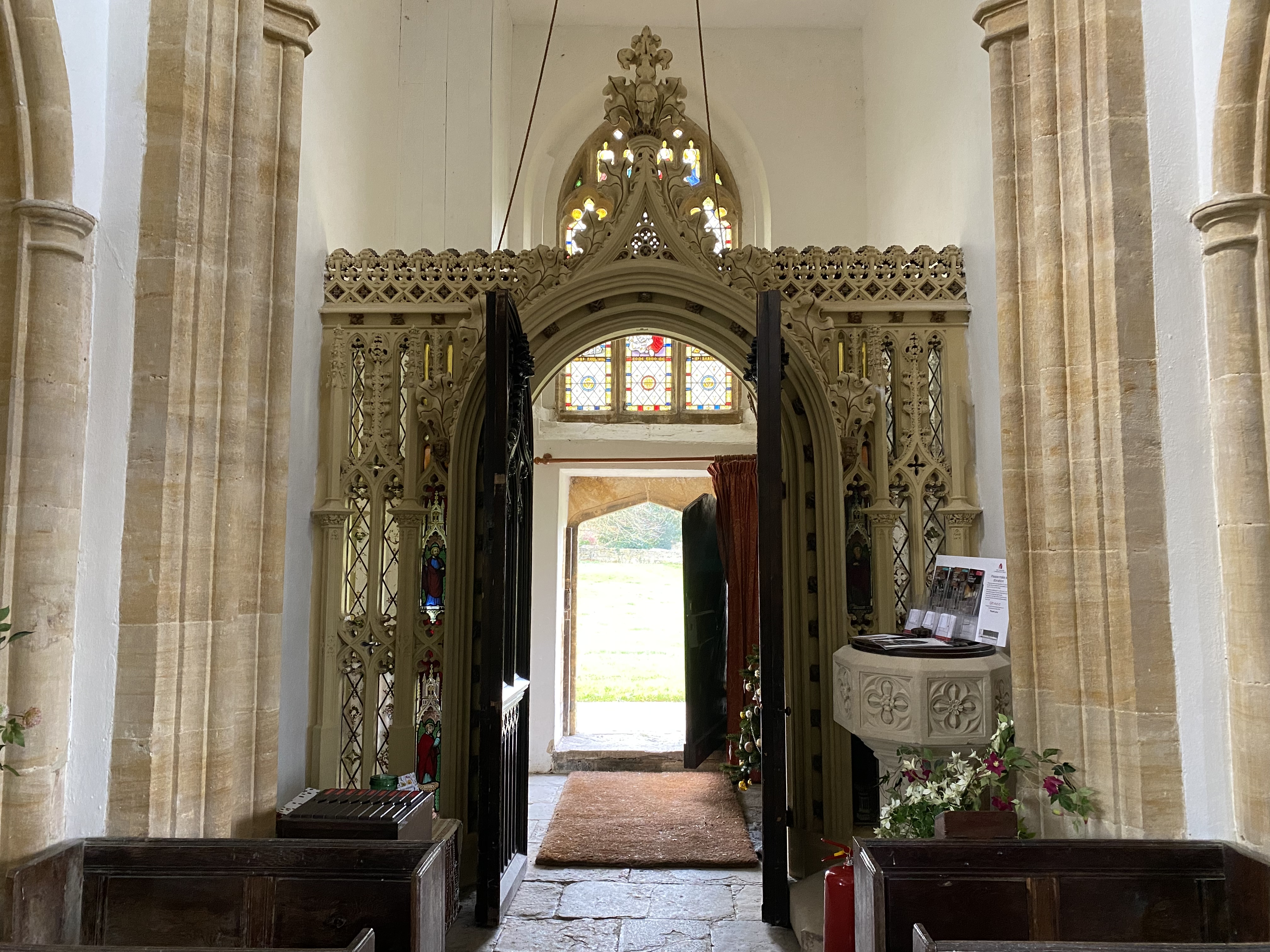
View through the west door to the field
There is scaffolding up around the chancel screen on top of which I see a woman who is quietly poking at something in the screen. Emma is a conservator from Devon who is here to restore the paintwork on the screen.
This screen is from 1620 and is in the same position as when it was first built. The Royalist inscription reads ‘My son fear God and the King and meddle not with them that are given to change.’ It is taken from Proverbs 24.
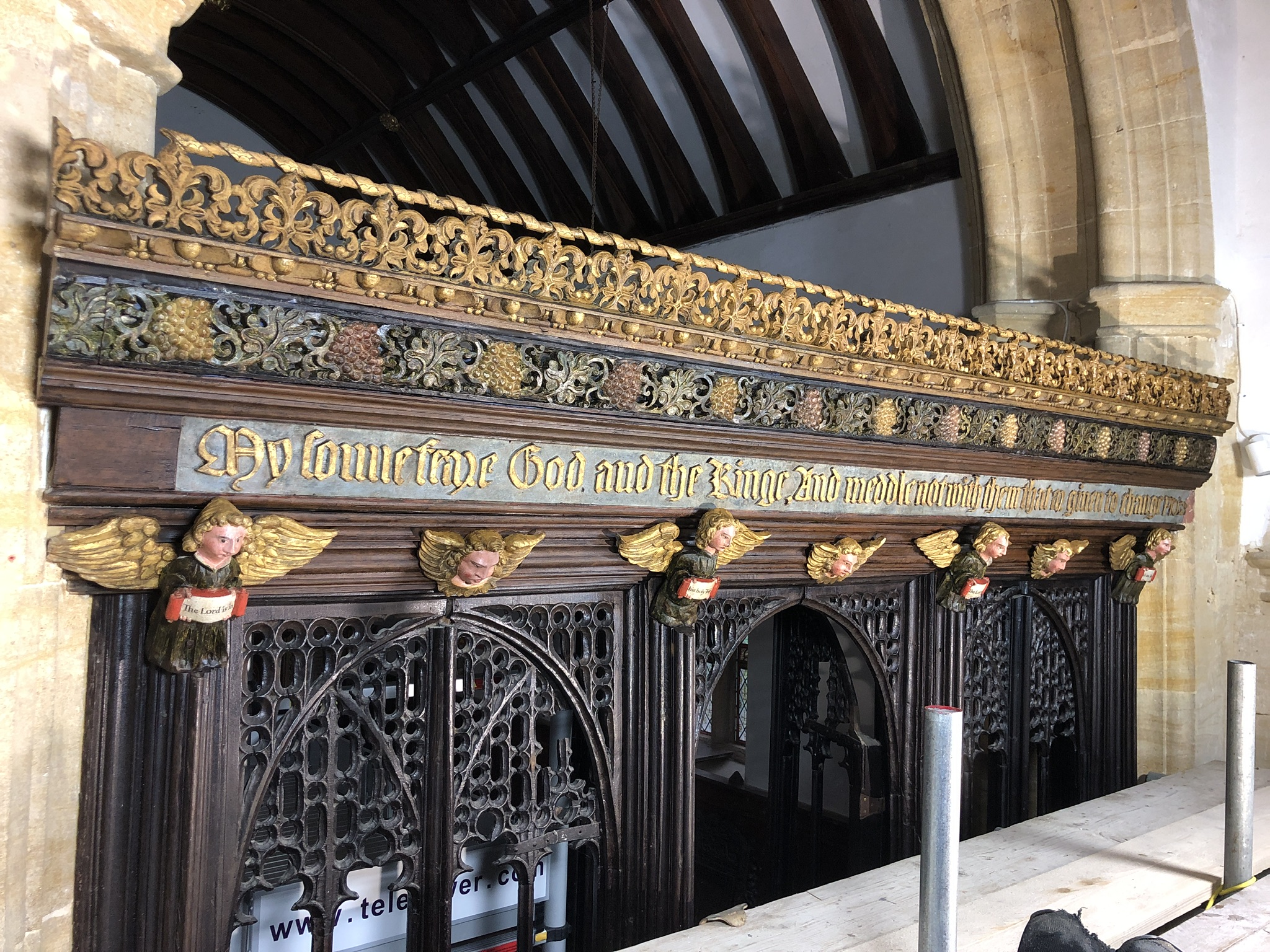
The newly restored chancel screen
There is a vine and grapes intricately carved along the top of the screen. Below it are rather comical looking angels with golden wings and long golden hair. They don’t have quite the same angelic looks of say a Botticelli version of those celestial beings.
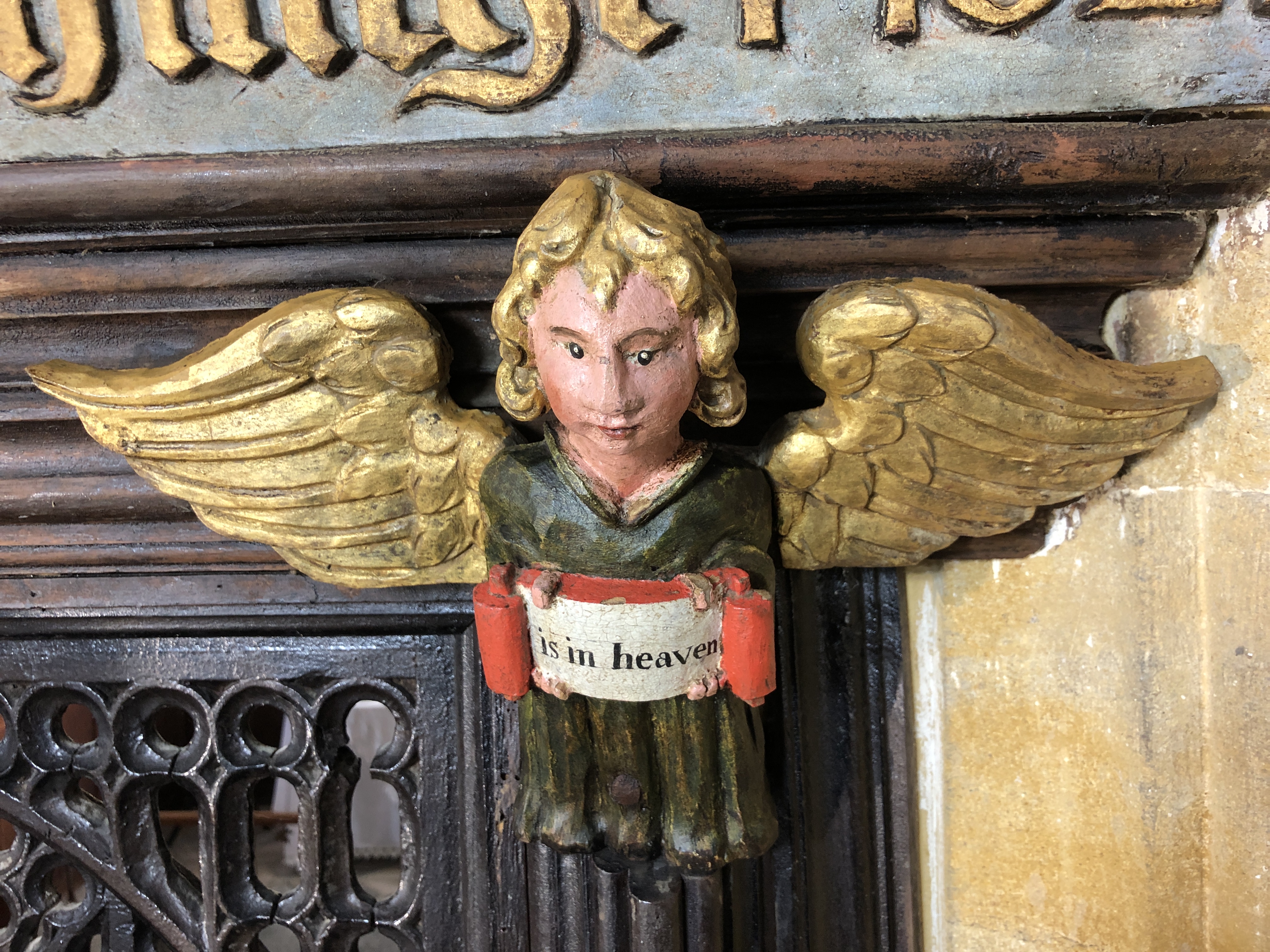
One of the newly cleaned angels at Low Ham
‘Some of them are cross eyed’ Emma informs me and thinks that their faces might be inspired by someone the screen maker would have known. She indicates how they all have similar facial features. There is a rough rural charm to these figures which remind me of the angels in dresses with thick hair, some of whom are baring their breasts, on the ceiling of Muchelney church a few miles west of here.
Emma laughs about its unusual position ‘Yes, I looked up from my work the other day and saw a cow wandering across the grass in front of the main door.’ It is literally, then, a church in a field and that is often how it is known as it is without dedication. There's something incongruous about this place of riches in its simple surroundings.
There are well preserved stained glass windows. The east window dates from about 1690 and depicts Mary and St John the Evangelist on either side of an empty cross. In the lower part of the window are fragments of post reformation 15th century glass probably taken from the medieval church that existed here before this one.
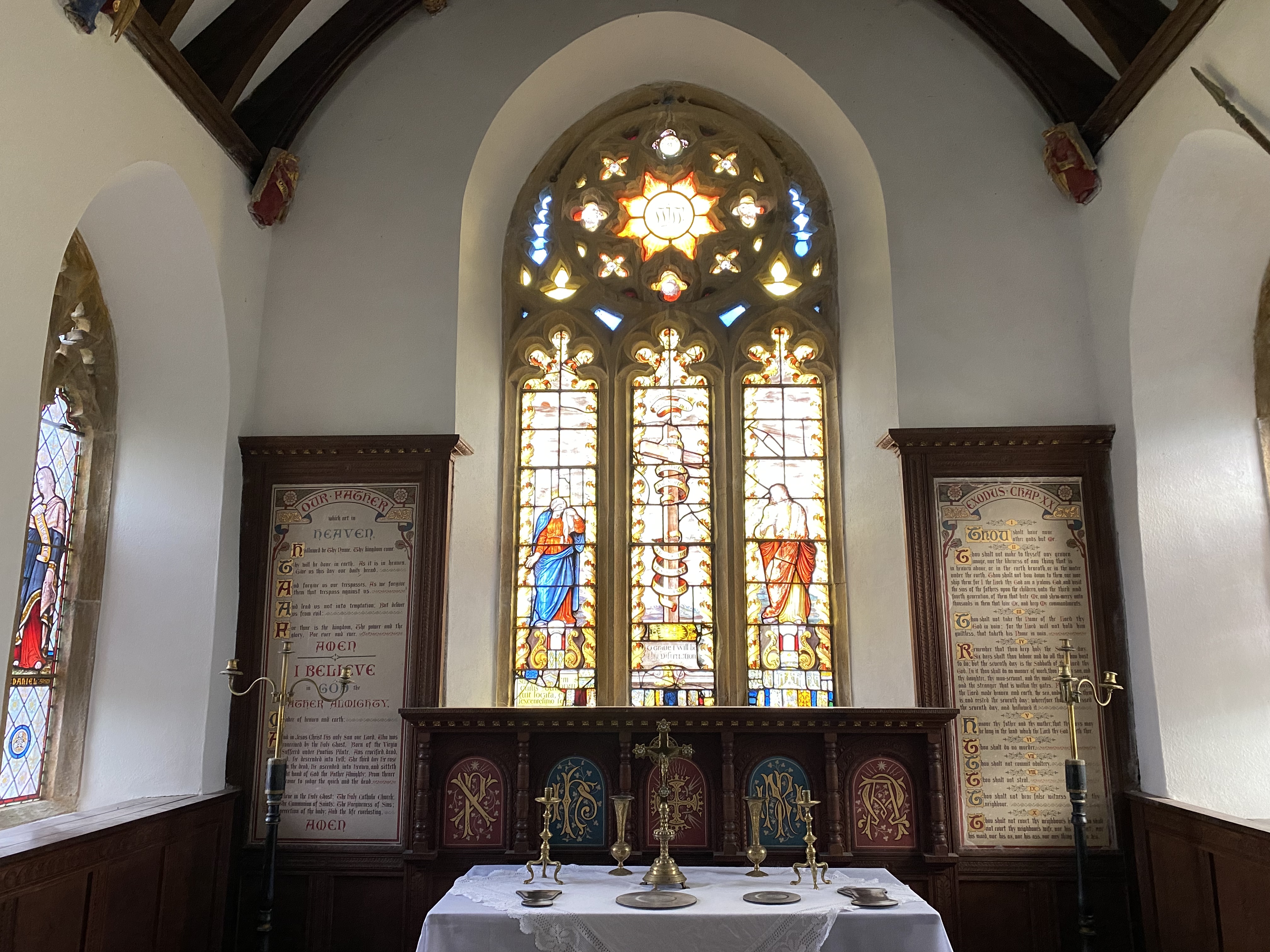
The chancel and east window
There is evidence to suggest that the church sustained significant damage during the civil war. Also in the window are the remains of an inscription that record the restoration that was undertaken afterwards by George Stawell, Sir John’s son.
To think that the openly royalist chancel screen, the royal coat of arms on the wall next to it and other features survived the civil war and the period that followed is remarkable especially as we know how much parliamentarian activity there was in this area and how ruthless Oliver Cromwell’s parliamentarians were at defacing England's churches. The Battle of Langport, which took place in fields nearby in 1645, was one of the critical battles of the war and where the west of England fell to the parliamentarians.
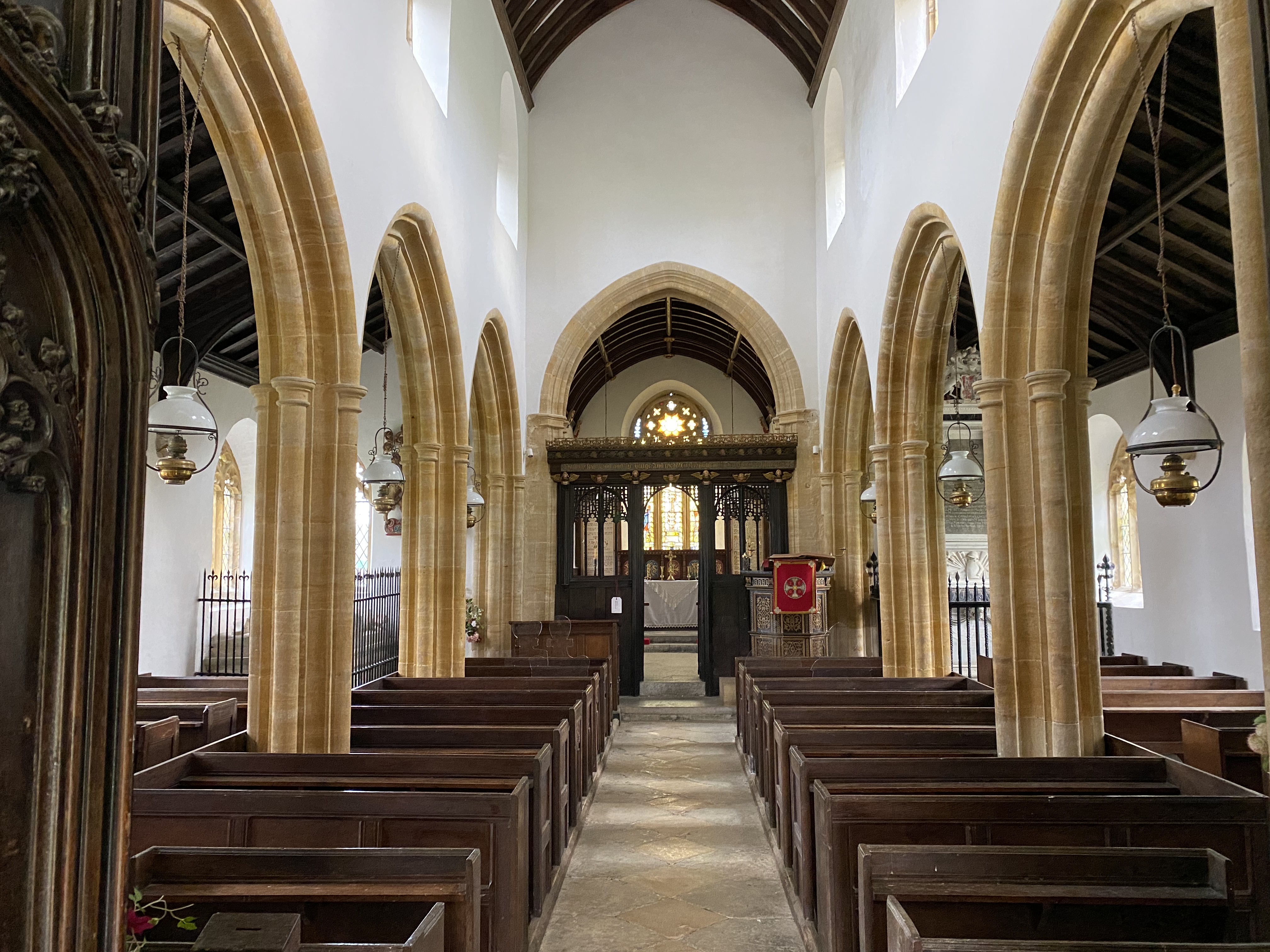
Looking east towards the chancel screen after its restoration
I wonder, though, if it is changes in people's attitudes to the church in the present day that now present a greater challenge to Low Ham church's survival. Rural churches across England are struggling to find the support that a generation ago would have been the norm. Many churches are experiencing ever decreasing congregations with those who do attend most often being members of the older generation. Finding the support to afford the upkeep of these historic buildings is a challenge.
'The Church in the Field', as it is known, seems a typical example of the problems facing churches across the UK. In 1991 the church had fallen into such a state of disrepair that it prompted the then vicar to announce that it would close. Some of the villagers formed The Church-in-the-Field Charitable Association which, although it was able to save the roof, could not generate enough money for other repairs and by 2015 English Heritage had put Low Ham on their 'At Risk' Register. Fortunately Low Ham was finally saved by being vested to The Churches Conservation Trust in 2017.
Carla Pilkington, the Chair of the association, tells me this still isn't enough. 'The CCT will preserve the church for future generations but they only have a small amount of money.'
As a result the villagers' association are continually organising events to preserve the church: a Christmas fair, garden fetes, flower festivals, scarecrow competitions, coffee mornings and more.
Yet it might be that they'll have to continue to reach beyond their local community for help. Unfortunately under the CCT's guardianship no more than six services can be held here a year, apart from baptisms, weddings and funerals. Also at the time of writing the parish of High Ham and Low Ham are without a vicar. Low Ham itself has just over fifty houses and like rural communities across the country is undergoing change. Many of those who live locally don't take an interest in the church. At least five of the houses in the village are now holiday lets. The church association organised a Christmas concert last year to raise funds but, aside from the organisers, less than ten people turned up.
I keep imagining those angels' faces that hold scrolls with phrases ‘O give thanks’ and ‘Unto ye lord’ and imagine if they could, what they would hear going on not far from here: the clash of swords as Englishmen fought and killed each other, the defeated local squire being taken to The Tower and having to give up all he owned, only then to have it given back to him after Charles II was restored to the throne. I wonder if they ever ponder the good fortune they have had to survive the ravages of time and conflict.
I once heard Ronnie Blythe, that great writer of English rural life, say how ‘churches are full of treasures.’ That is certainly true of Low Ham. Yet, along with many others, I wonder how it will survive those new challenges facing the rural Church - changing communities, dwindling congregations and a fading interest in church life and its monuments.



 Loading ...
Loading ...
What do you think?
You can post as a subscriber user ...
User comments (0)